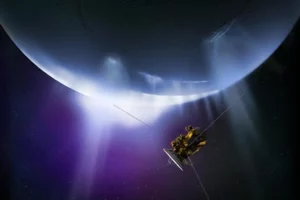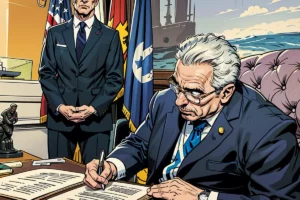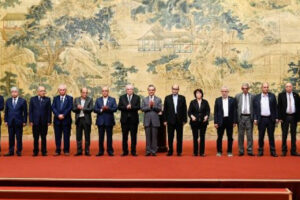You might be forgiven for thinking it to be a Hollywood romantic comedy. Zac Effron and Jessica Alba get their suitcases mixed up, and the search for the right bag leads to them finding each other, all heart eyes as the dust of the Dubai desert swirls around them.
Except, this “A Romance to Remember” is a promotional film commissioned by Dubai Tourism to get you to fall in love with the city.
Celebrity endorsements deliver strong triggers in the decision-making process for travelers, and tourism entities in the Middle East know that well.
Think, the many celebrity brand ambassadors for Dubai, John Cena for Abu Dhabi, Jennifer Aniston and Chris Hemsworth for Emirates Airlines, Nicole Kidman for Etihad Airways and the latest entrant on the field, David Beckham for Qatar.
Celebrity endorsements help a destination to highlight a tourism product that it may not be known for, announce a change or transition and also shine a light on the place for a new market, according to Danny Cohanpour, CEO and founder of Trove Tourism Development Advisors.
For instance, the Abu Dhabi campaign with John Cena last year helped to promote international sporting events in the city while also using it as an opportunity to announce that borders were re-opening for vaccinated international travelers.
However, while celebrities can influence the decision-making process, trust can only follow from how brands invest in building, delivering and sustaining the promised experience, noted Abdul Samee Qureshi, managing director at The Adroit Agency.
Once destinations have gone past the general awareness and created the first inbound traffic, they need to establish credibility, and that trust is reinforced by people coming back to the destination.
Even Popular Destinations Need Celebrities to Market Them
Any brand — including a destination — cannot rest on its laurels even if it is doing well or is popular, said Issam Kazim, CEO of Dubai Corporation for Tourism and Commerce Marketing (Dubai Tourism), calling celebrity endorsements one of the elements of a much more diverse and intertangled marketing matrix that a destination employs.
When working with celebrities a destination like Dubai doesn’t just consider their status in isolation, noted Kazim. “We start with the idea and concept, then make sure the campaign is aligned to the objectives and has clear outcomes. Only then will we decide if the celebrity route works for us, and which one/s would be the best partners.”
In the early stages, brands often use ambassadors with a wide following. One of the most popular examples being Nespresso signing on George Clooney as brand ambassador in 2006.
Drawing comparisons, Nicolas Mayer, global tourism industry leader at PricewaterhouseCoopers (PwC), explained that when Switzerland wanted to activate the Indian market, it tapped Bollywood actor Ranveer Singh to promote the destination — a logical choice considering the popularity of mainstream Hindi cinema among Indians as well as in large parts of South Asia.
The Right Message for the Right Audience
As long as the message created with the celebrity is relevant to the target audience, it seems to do the trick, opined Qureshi. “One of the key markets where the United Arab Emirates delivers exceptionally well is engaging celebrities from India and the outcome can be seen as India has been one of the biggest inbound markets for many years.”
India has consistently remained a top source market for Dubai. The emirate welcomed 7.12 million overnight visitors from January to June this year, of which the highest number of international guests were from India at 858,000 visitors.
One of the most popular Indian actors — Shah Rukh Khan has been the brand ambassador for Dubai tourism since 2016. Dubai tourism’s Kazim acknowledged that the choice of Khan is an indication of how important India is as a source market for the emirate.
In the past too, Dubai has worked on many marketing campaigns featuring prominent regional celebrities as well as influencers.
The celebrity mantra seems to work well for brands on either end of the spectrum. While some tourism boards may be very popular, they are looking to attract more tourists and may not even be halfway to where they would want to go. And then there may be many untapped geographical pockets, where destinations would want to be better known, according to PwC’s Mayer.
Tapping Niche Markets
Destinations also use celebrities to promote sub-segments. Tourism boards usually tap prominent names from a specific field to promote a particular event or occasion, with the expectation that these campaigns would be watched by people sharing similar interests.
A perfect example of that would be David Beckham for Qatar. Beckham would not only help Qatar to activate the UK market but would also help deliver the message of football to fans of the game as Qatar will be hosting the football World Cup later this year.
“With this, Qatar would be surgically targeting general football fans as well as travelers in the UK,” said Mayer.
While celebrity endorsements offer a substantial reach, running a parallel micro-influencer campaign can convert online visitors into actual visitors, opined Cohanpour. “Destinations must simultaneously leverage micro-influencers with proven experience with a direct and engaged audience on social media.”
Dubai tourism also works with influencers across the spectrum — from prominent names down to a micro-influencer, who may have a specific niche impact, said Kazim.
This is, however, just one string in the bow. As Kazim explained, “We have to map every channel of influence by market, audience, segment, time and point of the conversion funnel and build a marketing strategy tapestry from there.”
If it has a credible offering, a destination can find its audience through social media, according to Mayer. “The catalogue is dead and social media allows brands to identify and reach their target clients faster in the promotional awareness phase. The results too are instant and any correction that needs to be done can be done much faster.”
Source : Skift















